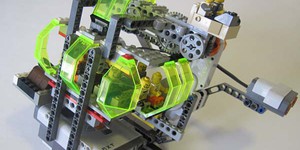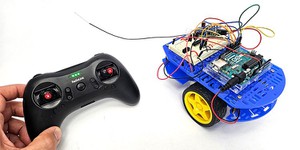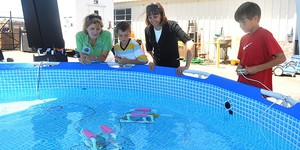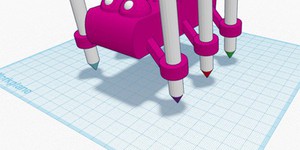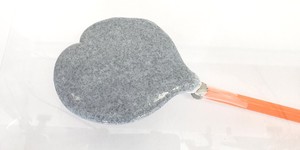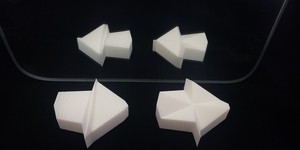Others Like “That's Creepy! Exploring the Uncanny Valley” (top 20 results)
|
If you ever rode in a cable car, ski lift, or gondola, you know they make moving over obstacles like lakes, valleys, rivers, or even up steep mountains seem easy. Though it would be pretty difficult to build a full-size cable car in your home, if you have a Mindstorms® kit, you can build a working-model cable car of your own. The engineering challenge is to build a LEGO® cable car that can travel across a string you have suspended somewhere in your house (between two pieces of…
Read more
Compare the strengths and weaknesses of different digital image formats. How does the amount of compression affect a JPEG image? What happens when you save a JPEG image multiple times?
Read more
Artificial intelligence (AI) programs can now generate photorealistic pictures of people who do not exist in the real world. How can you tell if a picture is of a real person or a fake, AI-generated person? What features of the picture do people use to decide whether the face is real or AI-generated? In this project, you will explore these questions as you ask volunteers to look at both real and AI-generated pictures of human faces.
Read more
Radio-controlled (RC) robots can explore places that are difficult or dangerous for humans to get to, like collapsed buildings after a natural disaster. They can use cameras and a variety of other sensors to gather information about their environment, like the presence of toxic gases or other hazardous materials. The robots can even use grippers and robotic arms to collect and safely dispose of some materials. You can build your own RC robot using the Science Buddies Bluebot kit, Science…
Read more
Underwater robots, or remotely operated vehicles (ROVs), help us explore areas of the ocean that can be dangerous for humans. They can provide valuable scientific information about deep-sea life and ocean climate. However, you do not need access to the ocean to build and test your own ROV. If you have ever wanted to build your own ROV but were not sure where to start, the SeaPerch platform is a great option. You can purchase a complete kit with all the required parts and follow the detailed…
Read more
Science Buddies has several fun robotics projects, like the
Art Bot: Build a Wobbly Robot That Creates Art
and
Grasping with Straws: Make a Robot Hand Using Drinking Straws,
where you use arts and crafts materials to make part of a robot. Have you ever wanted to design a more-advanced, sturdier, or fancier looking robot? Then computer-aided design (CAD) and 3D printing might be for you; both are simpler than you think! The directions on this page will give you an introduction to these…
Read more
Could you use a magnetic slime "robot" to retrieve a battery accidentally swallowed by a small child? Scientists think so! Watch this video to learn about magnetic slime that, when driven by external magnetic fields, can squeeze through small spaces and even grasp objects.
Can you make your own magnetic slime robot that can accomplish some of the same tasks demonstrated by the researchers? You can start by adding iron filings to slime to make your own magnetic slime (see this Science…
Read more
Engineers are trying to tackle the world's ocean pollution problem using robots. Some robots, like Mr. Trash Wheel and the ship featured in this Mark Rober video, are stationary and collect trash as it flows out of rivers before it gets into the ocean. Others, like the Jellyfishbot, are mobile and can squeeze into narrower spaces to collect trash:
Can you build and test your own trash-skimming robot? If you do not have access to a natural body of water to test it in, you can use a bathtub or a…
Read more
Make a pinhole projector (see Measuring the Diameter of the Sun and the Moon). Use the pinhole to project an image of the Sun onto a wall or a piece of paper. Do you notice any dark spots on the projected image? Trace the projected image and count the dark spots. Use your pinhole projector to make images of the Sun at the same time of day for several consecutive days. How does the pattern of spots change? Can you use your data to figure out how fast the Sun rotates? Sunspot activity rises…
Read more
The Science Buddies project Design Your Own 3D Printed Optical Illusion shows you how to make your own 3D printed "anomalous mirror symmetry" illusions (Figure 1). The illusions are based on the work of Dr. Kokichi Sugihara. You can read his original paper about the illusions in the Bibliography.
Figure 1. Two versions of the "impossible arrow" shape that appears to point to the right while its reflection in the mirror appears to point to the left. Which…
Read more
|
Explore Our Science Videos
Why Won't it Mix? Discover the Brazil Nut Effect
Build a Bird Feeder to Study Birds – STEM activity
Cricket Wicket Knockdown: 2020 Engineering Challenge

